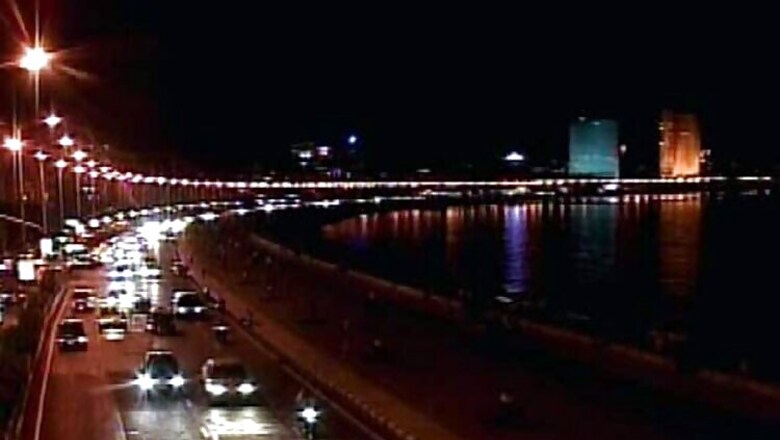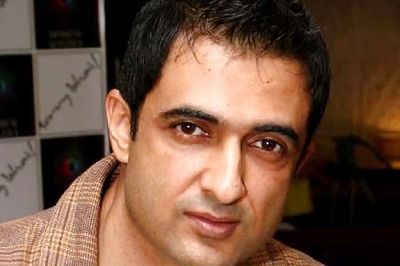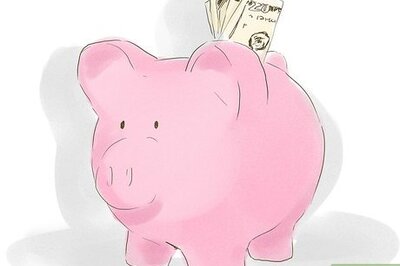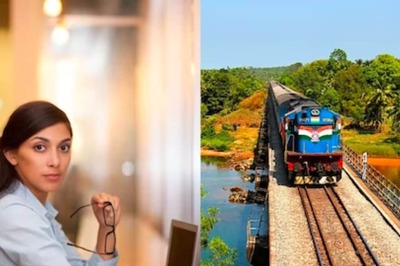
views
My entry point to India was Mumbai and, aptly enough, it began with a magnificent view of the Gateway of India and the Arabian Sea from the iconic Taj Mahal Palace Hotel. The Taj, of course, is a fairy tale, opulent abode, full of old world charm. The historic hotel reminded me of home, and our own enchanting places to stay in Vienna, especially the suite in Schnbrunn Palace overlooking the splendid baroque park with the Gloriette.
My stay in Mumbai was a gastronomic journey of taste and discovery. At the Taj Palace's iconic Masala Art restaurant, I sampled their signature dish -- the unique local Bombay Tiffin meal, inspired by the famed Dabbawalas whose six-sigma quality delivery system story amazes me.
Meeting them is definitely on the list for my next visit to India. The meal is served off a tiffin -- the server opens it, and three sparkling stainless steel dabbas emerge packed with a dal, a sabzi, rice and roti.
The meal pays tribute to the bustling culture of Mumbai, a city that is busy and teeming with little nuances. You round it off with Masala Chai served in a copper Katori.
If the Bombay Tiffin meal opened up the local flavors and wonderful aromas of the city, then my meal at the early 20th century Parsi eatery, Britannia and Co. in South Bombay with Beri Beri Rice Pulav; Raspberry Soda was another fascinating culinary expedition.
Baklava made me recall Viennese signature pasty -- the famous Sacher Torte. I was served by the elderly owner Boman Kohinoor, who showed me his impressive correspondence with a range of well-known personalities, including Zubin Mehta, the famous conductor of Indian origin who often performs in Vienna.
Just a few days in India were enough for me to fall in love with the ubiquitous local brew flavoured with ginger and cardamom -- the Masala Chai. While I relished the spicy Indian food, some desserts like carrot fudge (Gajar Ka Halwa) and Gulab Jamun were cherry on the cake.
I could not get over the variety of Indian breads -- from watching a roomali roti being rolled out in the Gymkhana Club in Delhi, to photographing an entire family dig into a huge bread, the naan, at the table next to mine at the Mughal Sheraton's Peshawar restaurant in Agra.
But food was just one part of my journey of discovery. Between all the business meetings there was some time to soak in Indian culture and see some impressive monuments.
My next stop, Delhi, brought me face to face with 1,000 elephants -- not in a Jungle Safari, but in the impressively carved Akshardham temple. In the evening I witnessed an exceptional sound and light show. But the content was hard to understand for someone not familiar with Hinduism. A drive past the biggest Presidential Palace in the world, the Rashtrapati Bhavan, and the impressive India Gate brought home the grandly classical architecture of Lutyens Delhi.
On my last day I visited the Taj Mahal, which was an undeniably breathtaking experience. I got up very early in the morning and had a comfortable drive on the Yamuna Expressway from Delhi to Agra, only stopping for a quick cup of Chai en route.
At the Taj, we were welcomed by guides who helped us with the tickets and enter the complex quickly. When approaching the main entrance, I could feel the excitement rising -- in a few seconds, I was going to take my first look at one of the most famous buildings in the world. I was curious if it would live up to expectations.
And then, I caught my first glimpse of the shining white Taj framed, picturesquely within the shadowy arch of the main gate. I must say it was truly overwhelming and I fell in love at first sight.
While the Taj is incredibly beautiful, what makes the monument really special is the story behind its construction, as explained to us by our Sherpa: Mughal Emperor Shah Jahan had this remarkable ivory white mausoleum built for his dearly beloved wife, Mumtaz Mahal.
But immediately after its construction he was imprisoned by his son, and could only see it from his jail window in the Red Fort. Here, Shah Jahan gazed at the Taj for the rest of his life. This makes it undoubtedly the most romantic wonder of the world.
It's an ode to love like nothing else and no wonder tourists throng to the Taj. The love story of Mumtaz Mahal reminded me of our own Empress Elisabeth "Sisi". Today, the Volksgarten around the monument of Empress Elisabeth is one of the most romantic spots in Vienna with 400 types of roses blooming here in spring.
Indeed, much of Vienna is enchantingly romantic and a favourite destination for Honeymooners. The narrow cobblestoned lanes, arcade -- lined courtyards and time-honoured palaces enable a brush with the past. The suites at the Schnbrunn Palace where the nobility once resided are now open to honeymooners. Of course, Vienna is particularly romantic in spring when the chestnut trees blossom in the vast Prater Park.
Perhaps it is this sense of romance that has inspired Indian filmmaker Karan Johar -- famed for his love stories like "Kabhi Khushi Kabhi Gham" -- to choose Vienna as the setting for his upcoming movie, "Ae Dil Hai Mushkil", starring Aishwarya Rai, Anushka Sharma and Ranbir Kapoor. The heart always finds a way to make connections. Vienna and India certainly did!



















Comments
0 comment